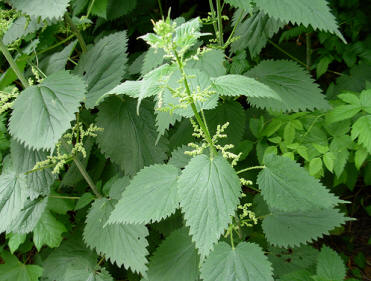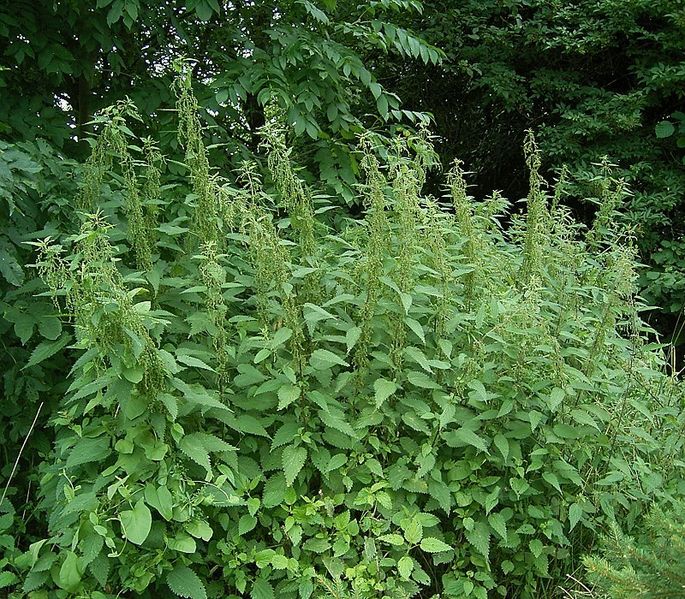Urtica dioica: Not Just a Plant that Stings
 Urtica
dioica, commonly know
as the stinging nettle, is a misunderstood species of perennial herb
that is native to Europe and much of North America. This plant, which
is commonly found along roadways, in empty lots and near rivers and
streams is well known to many people for the small hair-like
structures lining the leaves and stem, which can inflict a painful
sting and itchy rash when it comes into contact with skin.
But this so called “nuance of a
plant”
that grows like a “weed” is actually one of the most nutritious, wild
Urtica
dioica, commonly know
as the stinging nettle, is a misunderstood species of perennial herb
that is native to Europe and much of North America. This plant, which
is commonly found along roadways, in empty lots and near rivers and
streams is well known to many people for the small hair-like
structures lining the leaves and stem, which can inflict a painful
sting and itchy rash when it comes into contact with skin.
But this so called “nuance of a
plant”
that grows like a “weed” is actually one of the most nutritious, wild
 plants in existence. Urtica dioica has been used by native
peoples for centuries as a dye, to weave cloth, for its medicinal
properties and as a delicious and nourishing edible green. If you
are interested in exploring the wonders of this plant, in learning why it
stings, how it reproduces and even how to prepare a meal using
stinging nettles continue exploring this site. Click on the links at the bottom of each page to
take a personal tour though the wonderful world of Urtica dioica.
plants in existence. Urtica dioica has been used by native
peoples for centuries as a dye, to weave cloth, for its medicinal
properties and as a delicious and nourishing edible green. If you
are interested in exploring the wonders of this plant, in learning why it
stings, how it reproduces and even how to prepare a meal using
stinging nettles continue exploring this site. Click on the links at the bottom of each page to
take a personal tour though the wonderful world of Urtica dioica.
If you are interested in learning about other organisms involved in the University of Wisconsin- La Crosse's multipleorganisms.net project, click here.
You can contact Kailee Homolka, the author of this website, by clicking here.
To learn the meaning behind the scientific name Urtica dioica, click here.